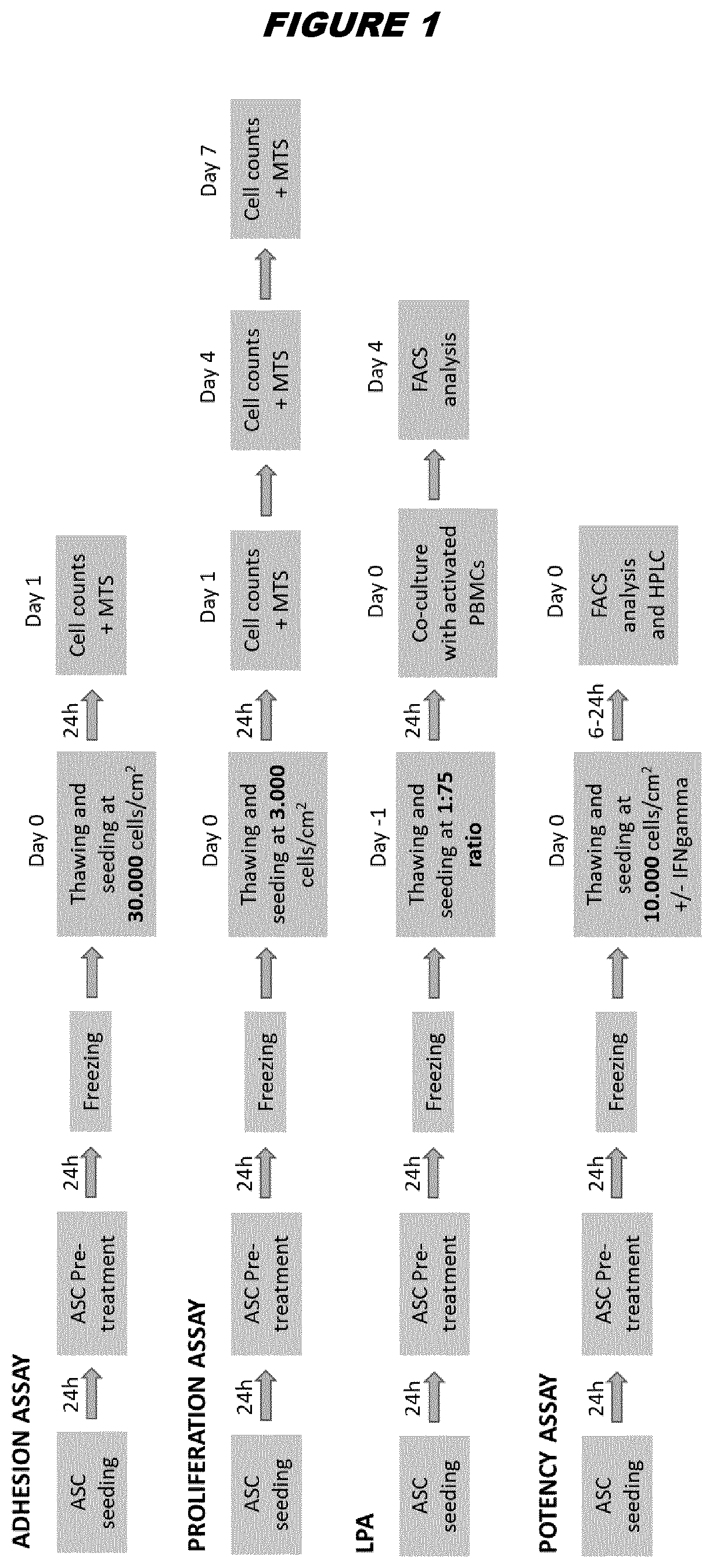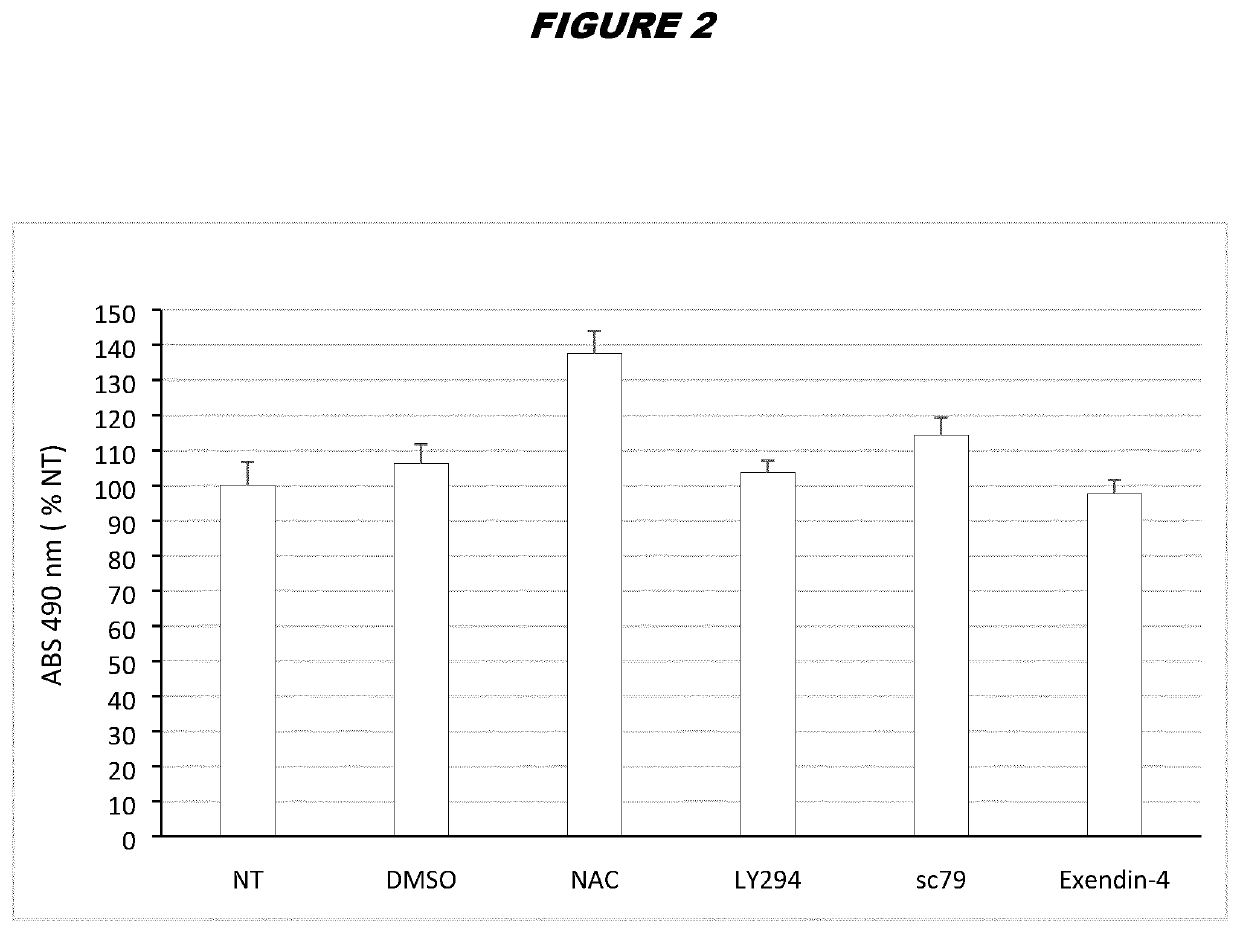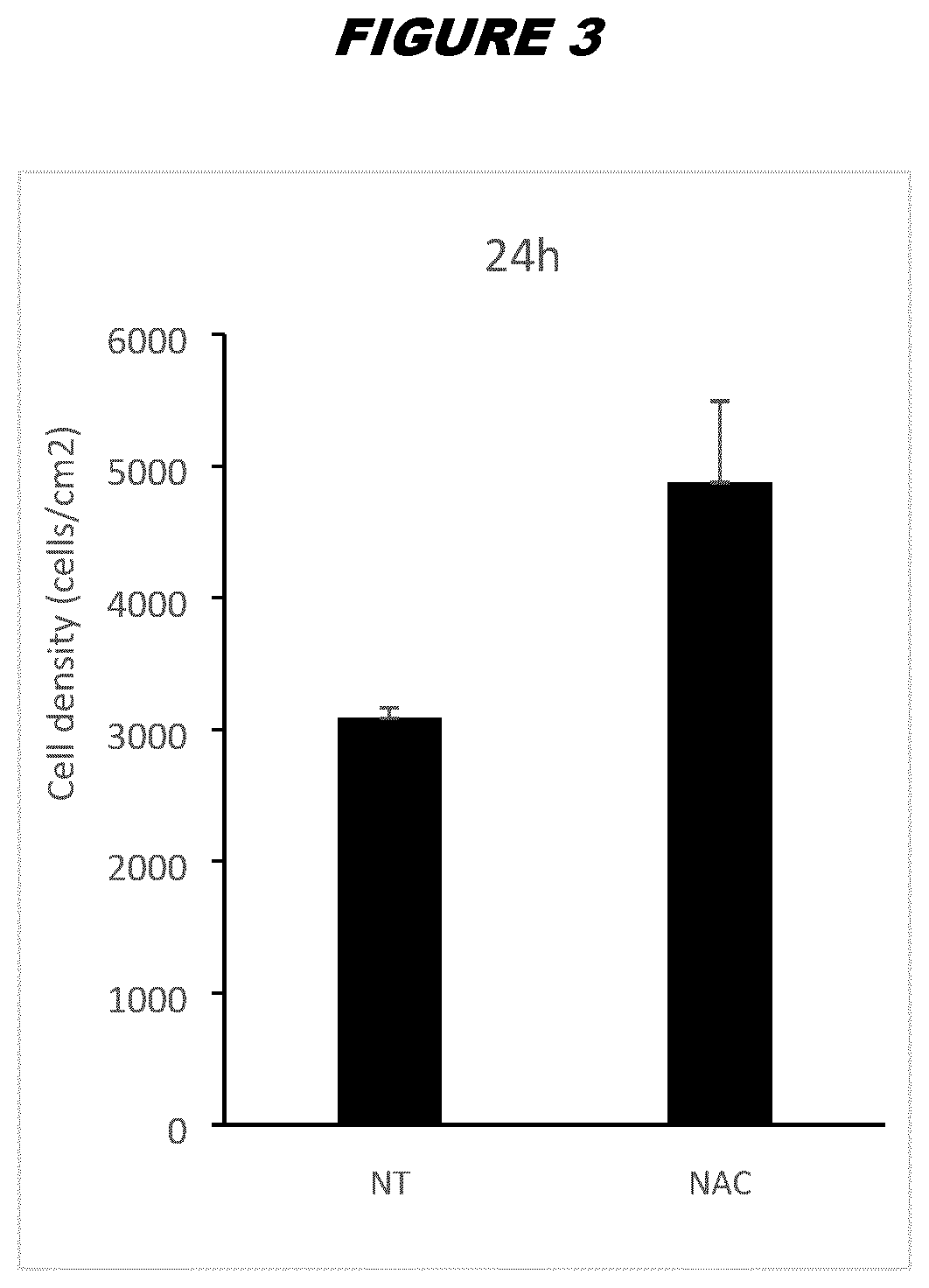Cryopreservation of stem cells
a stem cell and cryopreservation technology, applied in the field of cryopreservation of stem cell populations, to achieve the effects of increasing the number of viable cells after thawing, facilitating research studies and clinical applications of stem cells, and increasing the growth ra
- Summary
- Abstract
- Description
- Claims
- Application Information
AI Technical Summary
Benefits of technology
Problems solved by technology
Method used
Image
Examples
example 1
tion and Culture
[0211]Human samples were obtained with informed consent (as approved by the Spanish Ethics Committee of reference for the site of tissue procurement; Clinica de la Luz Hospital, Madrid, Spain). ASCs were obtained as previously published (Mancheno-Corvo et al., Frontiers in Immunology (2017), 8, 462; Menta et al., Frontiers in Immunology (2014), 8, 462). Briefly, human adipose tissue aspirates from healthy donors were washed twice with phosphate-buffered saline (PBS) and digested with 0.075% collagenase (Type I, Invitrogen, Carlsbad, Calif., USA). The digested sample was washed with 10% fetal bovine serum (FBS), treated with 160 mM NH4Cl to eliminate remaining erythrocytes and suspended in culture medium (Dulbecco's Modified Eagle Medium (DMEM), with 10% FBS). Cells were seeded in tissue culture flasks and expanded (37° C., 5% CO2) with change of culture medium every 3-4 days. Cells were transferred to a new flask when they reached 90% confluence. Cells were expanded ...
example 2
Various Pretreatment Steps on Post-Thaw ASC Cell Number
ASC Pretreatment
[0212]ASCs from donor A were thawed by warming the vials in a 37° C. bath and diluting the freezing medium containing DMSO with fresh complete DMEM (DMEM / F-12 media—GlutaMAX™-I, Gibco, supplemented with 100 μg / mL penicillin / streptomycin and 10% FBS). Cells were centrifuged at 450 g for 6 minutes at room temperature to eliminate leftover DMSO and plated in T-175 flasks at 20.000 cells / cm2 in complete DMEM. 24 hours post-thaw, the cells were treated with the suitable concentrations of the compounds indicated in the table below for 24 hours:
ConcentrationCompoundused hereinReferenceNAC6mMLi et al., Scientific Reports (2015) 5: 9819LY29410μMGharibi et al., Stem Cells (2014) 32: 2256-2266sc7910μMChen et al. Oncotarget (2017) 8(19):31065-31078Exendin-420nMZhou et al. Scientific Reports (2015) 5:12898 & Zhou et al. Free Radical Biologyand Medicine (2014) 77: 363-375
[0213]A 600 mM stock of NAC (SIGMA) was prepared in Mill...
example 3
ssessing NAC Pre-Treatment Steps on Post-Thaw ASC Cell Number
[0219]ASCs pretreated with NAC according to the methods described in Example 2 from donor A or donor B final drug substance (FDS) were thawed by warming the vials in a 37° C. bath and quickly diluting the freezing medium containing DMSO (FBS with 10% DMSO) with fresh complete DMEM. Cells were centrifuged at 450 g for 6 minutes at room temperature to eliminate leftover DMSO, and plated in P6-well plates (Falcon #353046) in triplicates at 3000 cells per well in 5 mL of complete DMEM per well. Cells were washed with 1×PBS and trypsinized using trypsin-EDTA 0.25% (ThermoFisher) for 8 minutes at 37° C. After trypsin inactivation using complete DMEM, cells were harvested, centrifuged and resuspended in fresh DMEM; triplicate wells were unified as a single sample for counting purposes. Cells were counted in triplicates at 24 hours, 96 hours and 7 days after plating using an Invitrogen Countess Automated Cel...
PUM
| Property | Measurement | Unit |
|---|---|---|
| temperature | aaaaa | aaaaa |
| temperature | aaaaa | aaaaa |
| temperature | aaaaa | aaaaa |
Abstract
Description
Claims
Application Information
 Login to View More
Login to View More - R&D
- Intellectual Property
- Life Sciences
- Materials
- Tech Scout
- Unparalleled Data Quality
- Higher Quality Content
- 60% Fewer Hallucinations
Browse by: Latest US Patents, China's latest patents, Technical Efficacy Thesaurus, Application Domain, Technology Topic, Popular Technical Reports.
© 2025 PatSnap. All rights reserved.Legal|Privacy policy|Modern Slavery Act Transparency Statement|Sitemap|About US| Contact US: help@patsnap.com



